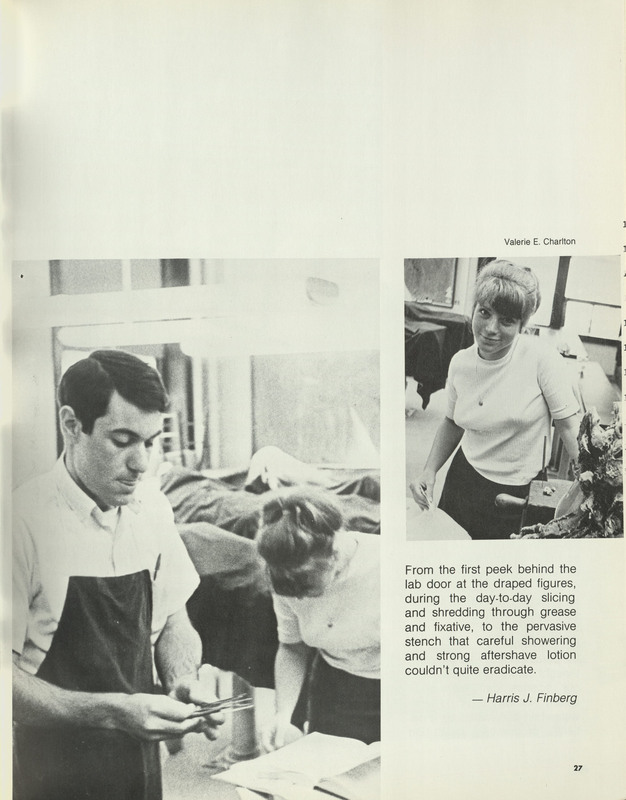The Later Years
With the implementation of a core curriculum of study in the late 1960s, only a small amount of time could be devoted to actual dissection, which then had to be supplemented by surrogate demonstrations and technological innovations.
Time-consuming student dissection had to be reduced to a minimum. Therefore, some twenty-five prosected bodies were prepared during the fall term by staff and paid student prosectors…. Dissection by students was confined to an upper or lower extremity so that they would at least have a limited personal experience with the technique…. The supply of visual aids was increased by purchase of Fairchild projectors and a number of cine-prosector cartridge films with sound tracks describing the salient features of the anatomy.
The gross anatomy course in 1970 lasted just five weeks in the first year, with one of those weeks devoted to embryology. The amount of time available for student dissection was so limited, it was considered more efficient “to rely upon the prosections for those areas of the body where disease is most frequently encountered,” and the students were given the opportunity to dissect only a single limb. The size of the Department’s professional staff in 1970-1971 included seven professors and five visiting professors, six associate professors, seven assistant professors, six associates in anatomy, and over twenty research fellows, along with a substantial secretarial and technical staff, and during that academic year, over eighty research papers were published by members of the Department.
Somewhat ironically, as the time devoted to dissection decreased, states began to adopt a uniform anatomical gift law in 1968 to allow for an easier and consistent means of donation of bodies for anatomical study and also organs and tissue for transplantation. Leaving one’s body to science became not only an accepted practice, but even an admirable one.
The middle years of the 1970s saw a slight resurgence in the importance of gross anatomy, and students “dissected thorax, abdomen, one limb and neck. Head dissection was limited to the regions which are of special interest to the general practitioner. Prosections were used to illustrate the body parts where dissection was omitted.” While the traditional course in gross anatomy, histology, embryology, and neuroanatomy was presented, the personnel of the Department of Anatomy concentrated their research on subjects of cell structure, development, and function. This shift in emphasis was codified on January 1, 1985, with the change of name to the Department of Anatomy and Cellular Biology “in order that our official title better reflect our research interests, both for the benefit of existing faculty and to facilitate new faculty recruitment.” At this same time, the curricular changes associated with the implementation of the New Pathway program meant that first-year medical students had an eight-week block on the human body where “cell biology, histology, and anatomy will be taught in an integrated fashion, introduced via discussions of carefully planned clinical cases.”

